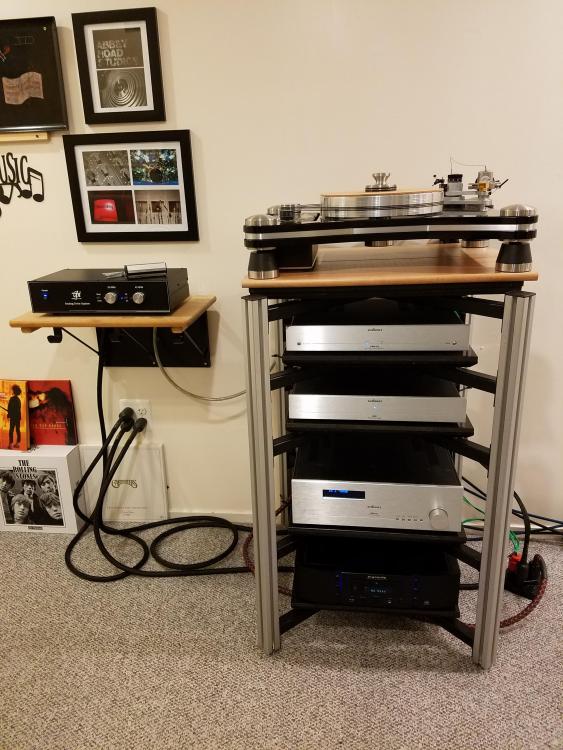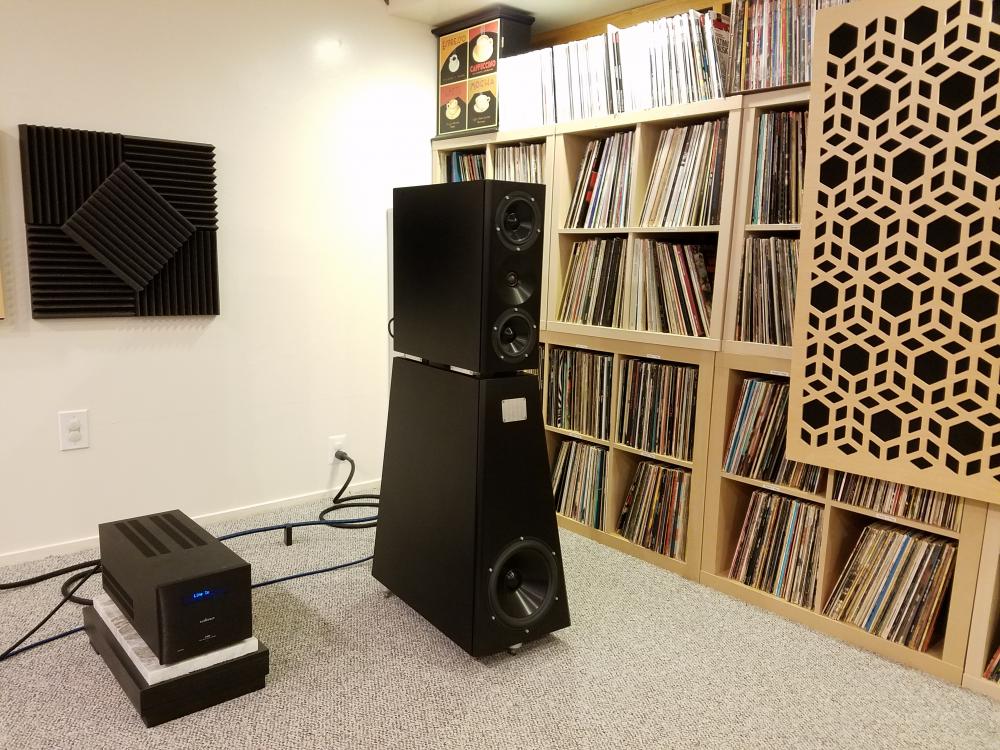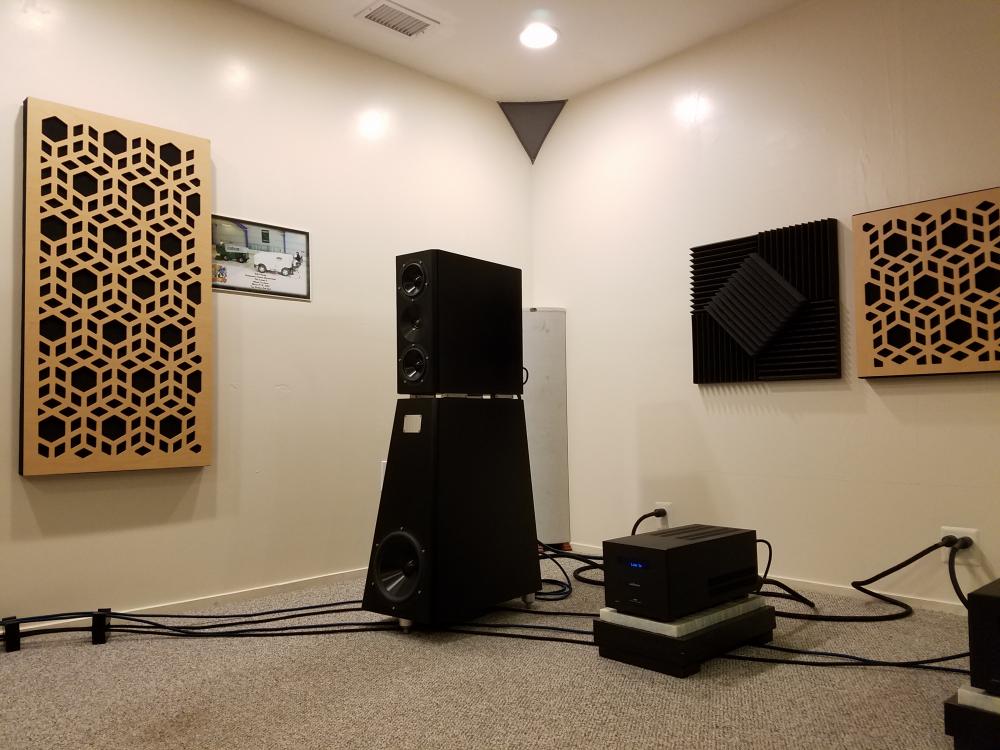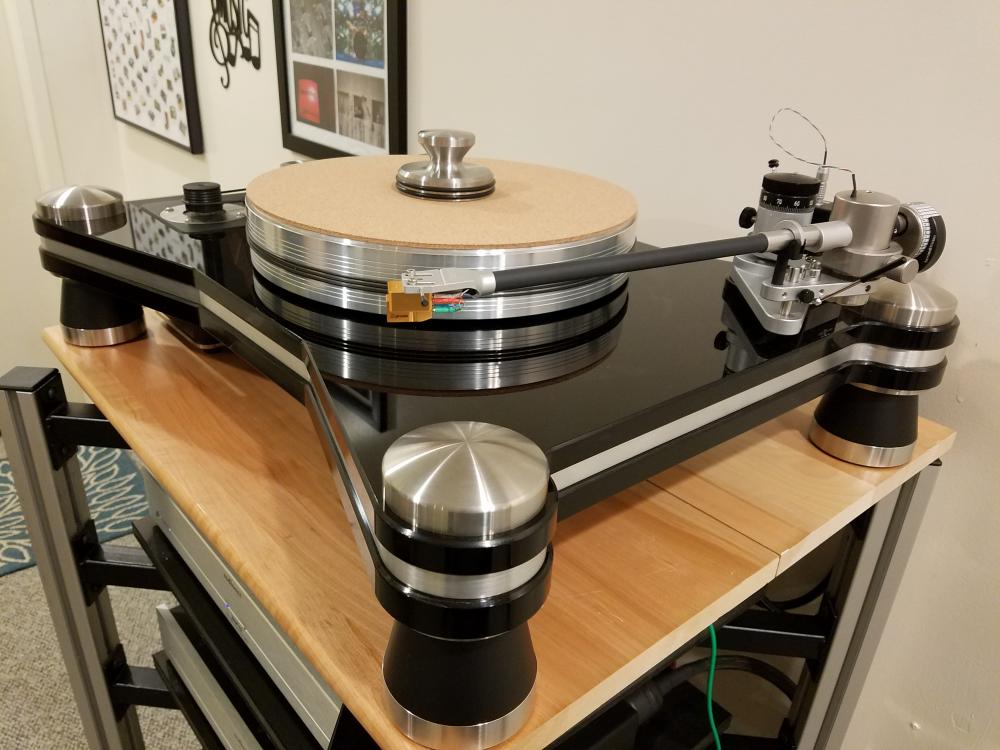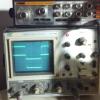Leaderboard
Popular Content
Showing content with the highest reputation on 10/17/2017 in all areas
-
After many, many years with BAT/Avid/SME YG Acoustics systems this is what my wife and I have spent the last year building for listening to records through. VPI HR-X w/12.7 arm, and VPI ADS power supply. Air Tight PC-1 Supreme cartridge. AudioNet PAM G2 phonostage w/ AudioNet EPS G2 power supply. AudioNet PRE G2 preamp, AudioNet AMP Monoblocks and YG Acoustics Anat III signature speakers with a couple upgrades. Back up cartridge is Benz LPS. Mono is Ortofon Cadenza mono on seperate 12.7 armwand. Digital (Dac, Rdbook, SACD) all done with Marantz SA11s3. Cables are a blend or Kubala-Sosna and Audioquest. Power cords are Signal cable reference and DH Labs Red Wave. Room treatment from GIK. Audio Desk Systeme record cleaner. Adona rack9 points
-
Traegered Pork and Chili powder and cayenne sweet potatoes. Sent from my iPhone using Tapatalk6 points
-
Amazing how many parts are out of stock for this? So in order to use this on a tight shelf I bought some 4x10" heat sinks and modified the case to use them Only 60 holes to drill and tap. now moar better.5 points
-
Oh, I am. It was an emergency adoption caused by an asshole being an asshole out of spite, and cats not having a place to go. I'm getting used to them, though one of the cats (the mostly-black one) had some kind of conniption fit, and kept me up last night for hours. The mostly-white one seems to have been embarrassed by the whole thing: This was after mostly-black one calmed down, but before I went back to bed. I've gotten used to having them around.5 points
-
At least three people stepped in as CEO's or sales managers of Cavalli over the years and I heard they all paid a huge investment for those positions. That was really the issue with Cavalli aside from amps needing a lot of servicing and not being made to be serviced, too many fingers in the pot. I spent a lot of time working on the LLMk1 and ended up completely rebuilding it. New PSU, new output stage, new input stage, new gain stage and even a new transformer. I lost a pile of money on it too but I knew that going in. We do this because shitty products should be exposed. I was at the local Senn dealer today to setup my HE-1 audition (tried to get them to bring it to my place but no dice ) but while there they were asking my advice on some amp designs and one of the guys said "you are always so negative about the designs!!". I said "true but that's because for every Headamp amp that is built properly you have dozens of posers who don't have a clue what they are doing. If they were charging 250$ then who cares but 10K$ for the Goldmund pile of fail is just too much to take." That's pretty much what sums it up for me, nothing has changed from 2005 when nobody wanted to discuss the amps in detail. It was all about the beautiful, beautiful music and any dissent to that was crushed. This is a wider subject for me though as people are willing to swallow just about anything, regardless of how stupid it is. Just see something like Elon Musk's "Hyperloop" or classics like Solar roadways... Stupid and bad shit needs to be called out.4 points
-
Cats have simple rules. Meow cuddle me. Meow let me out. Meow feed me. And that is about the limit of their vocabulary and needs. The 3am madness seems to stop once they get a bit older - at least that was the case with ours. Granted there is another level of dialog comprising purrs and chirps, and a particular type of meow which means "I've caught something, and I want to bring it inside and give it to you"; as if we need yet another mangled rodent or frog.3 points
-
"some kind of conniption fit" -- around 3am? I call that the "midnight nutties". Most cats do that." "around 3am" wouldn't be entirely incorrect. I'm learning something about cats everyday. The "love-bites" made me a bit nervous, at first, but apparently cats do that when they are overstimulated, even if they are just laying on you purring while you pet them, so I learned that, too I think I'm now a cat-person, honestly.3 points
-
dbel84 once again puts foot in mouth with this gem "I can also tell you that he will not be publishing any of the production designs for DIY. This is not selfish or mean spirited but rather more of a support issue as the boards are 4 layer and very specifically designed to perform the way they do - anyone trying to lay out a 2 layer board will run into some challenges. I had this conversation with him a long time ago as designs were retired ( Liquid Fire ) , and know that his positioned would be unchanged. Laying out boards was a gift that Alex had, I have yet to see anyone so skilled , it was part of the artist in him." I think birgir will agree that alex's layouts are among the absolute WORST that we have ever seen. Specifically for the Liquid Fire, LL mk1, LLmk2 and LG, they are all 2 layer boards with 1 oz copper, super thin lands that wander all over the place, and solder pads that are way to small. The left channel does not match the right channel on the Liquid Glass. The liquid carbon is just a terrible layout. As the stax mafia did in the past publishing every single singlepower design (except for one, never could get a active cable driver) I assume its our job to now publish both schematics and diy boards for every single cavalli product3 points
-
"some kind of conniption fit" -- around 3am? I call that the "midnight nutties". Most cats do that.2 points
-
2 points
-
Yup, I thought about doing a RIP Cavalli thread with all the bad shit he's done over the years but didn't find the time. Even the site now throws up a cert error... Must be nice to have a terminally flawed Liquid Carbon with a "lifetime" warranty.2 points
-
2 points
-
1 point
-
Super light and lifts on or off in a matter of a couple seconds. Held on with one screw in the Ikea record storage.1 point
-
I think you need to include a traeger warning ("succulence"?) on these posts.1 point
-
Kevin, I'm guessing that being a "thought leader" just took up too much of his time Maybe the Liquid Lunch will be his next venture.1 point
-
Normally I would feel sorry for anyone having any kind of mishap with their audio gear, but there's been plenty of warnings about Cavalli, but not only has these warnings been ignored by some, they've also been ridiculed at that other site.1 point
-
Mostly-white cat performs ridiculous dance for several minutes while playing with newly found twist-tie. Jacob takes twist-tie, thinking that it's a choking hazard (Jacob knows very little about cats). Mostly-white cat makes pathetic mewling sounds. Jacob returns twist-tie. Mostly-white cat performs ridiculous dance for three seconds, then decides that magically appearing-and-disappearing twist-tie is fickle, and thus not deserving of respect. Mostly-white cat proceeds to ignore twist-tie, forever after. Jacob looks to computer to type post about cats. Mostly-white cat is replaced by mostly-black cat, in the meantime. This is Jacob's life, now, because Jacob now has cats.1 point
-
1 point
-
^ Too true Juan. I'll get in a run and bunch if fishing instead though so not too bad a fall back.1 point
-
If you ever decide to part with the fanatec I may be interested. I should post some pics of my Calfee with Mad Fibers sitting there.1 point
-
no of course the effort is not worth it. But we will do it anyway. I have schematics for the liquid fire, liquid lightning mk1 and mk2, liquid carbon, and liquid gold. And from some really good pictures of the massdrop cth, got most of the schematic for that. Did release a liquid gold mini board a while back, just put 4 on a heatsink and add power supply. In fact you can replace the mosfets with bipolar for something that performs much better. the mosfets on the liquid lightning had capacitance so high that they took more power to drive than the power they delivered to the headphones. cavalli's motto is take a well known working circuit and replace as much of it as possible with mosfets, because its moar better. someone we all know well has ordered both massdrop amplifiers. unless massdrop figures out how to prevent the liquid carbon from blowing up, the repairs will eat them alive.1 point
-
1 point
-
actually this probably exceeds the singlepower level of failure. Not in the same way, Mikhail walked away with piles of peoples money, but at least for the liquid carbons, one simple mistake with the volume up and plugging in a SE headphone, and the thing blows up. And sometimes it blows up so bad as to burn thru the board, and is now unrepairable. For people outside the usa, by the time you send it in, get it repaired and get it sent back, only for it to blow up again, might as well just throw it in the trashcan. Liquid Fires, now completely unrepairable, i'm sure that Liquid Lightning units are also unrepairable... The SBAF comment is classic. And SO fucked. just remember the first 25 or so people paid over $6k for the liquid gold... Liquid Glass, yep a classic, depending on what tubes you stuffed in there, up to 3 or 4 db of channel imbalance, and no balance control. And this quote from dBel84 is absolutely amazingly delusional " He has struggled to keep CA afloat through numerous challenges and was always willing to sacrifice himself in an effort to do what he believed was the right thing to do. This was not an easy decision for him and I can only support him for doing so"1 point
-
"This is too bad. Loved many of Alex's amps. Liquid Glass, Liquid Crimson, Liquid Lightning 2, EHHA, etc. I just can't figure why Warren, the CEO, never participated on SBAF to bring exposure to Alex's amps. HF is great and all that for initial exposure in Jude videos, but SBAF owns the high end. Besides many on SBAF, and CS before that, viewed Cavalli gear positively. Still scratching my head on this. I almost get the sense Warren avoided us to placate his master Jude, to the detriment of Cavalli Audio." - Marv, 20171 point
-
Hmmm... "once I had been able to establish a robust company with excellent products." Guess that never happened... Sent from my iPhone using Tapatalk1 point
-
1 point
-
Bruce Springsteen - We Shall Overcome - The Seeger Sessions1 point
-
Saw My second robotics tournament today. Still learning the scoring and strategies. Several lightning delays for WMU/Akron. First delayed getting in stadium. Now under the stands waiting for all clear to go to seats. Game will start sometime after that And the game was postponed until tomorrow @ 1:00 p.m. Why did they postpone the game?1 point
-
1 point
-
I greatly prefer Mexican Chorizo. Me: Took the kids out for burgers and fries (shakes for them, beer for me) while Maura had to do parent/teacher conferences. Chili Fries for me / Truffle fries for the kids in the background Urban Cowboy Burger (burger, bacon, cheddar, onion rings, bbq sauce, chimichurri)1 point
-
No, no ebay for me and you're free to buy whereever you want. i'm not offended at all if i didn't want people to make them, I wouldn't have released it under CC-by-SA license. Open source is just something I appreciate and promote and I much prefer people who respect it . that's it1 point
-
Sorry but I don't sell them on ebay. Direct sale only for anyone who asks From what I remember, there are two ebay offers. One in the US and one in Italy. Please, make me a favor and avoid and don't promote the Italian one. He didn't respect the CC-by-SA license and didn't credit me nor linked to the orginal thread on SBAF. The US seller did respect the license Glad you're enjoying the mod though.1 point
-
@torpedo : I tried a bunch of foam tips . not Silicon one. issue was mostly than results was a bit all over the place. Depending on the cut and the fit , the results could differ quite significantly. that's why I understood it was a kinf of dead end. I began then to experiment a few things that's more in line with the current SDR. When I achieved my goal to have something that looks almost "HD800S like" with the current state of the mod, I stopped to experiment anything else. That's was "enough" for me. the SDR works specifically on the 5-6khz range. Other mods induce different "benefits . all worth a try imo although I personaly use only a SDR. I'm fine with the result for what I listen to mostly.1 point
-
Let’s finish off by looking at the output stage and how it interacts with the input stage. The original SRX used a 6CG7/6FQ7 dual triode in a simple balanced differential output. This tube has a maximum DC plate voltage rating of 330 volts, maximum plate dissipation of 4 watts per plate but a combined dissipation rating of 5.7 watts for both plates combined, and an amplification factor of 20. In the SRX this was run at a DC plate voltage of about 250 volts and 5 mA/plate for a total dissipation of 2.5 watts, which is quite conservative at 75% of max plate voltage and 44% of maximum plate dissipation. The 6CG7 was designed as a nine-pin equivalent of the 6SN7 (read: cheaper). If we want more power, we can go to the 6SN7’s bigger brothers, the 6SN7GTA and GTB, which are rated at 450 volts maximum DC plate voltage, 1500 volts peak positive plate voltage, and power dissipation rating of 5 watts/plate and 7.5 watts combined. Note the difference between the maximum DC plate voltage, 450 volts, and the maximum peak plate voltage, 1500 volts. Even if we run this tube at the maximum DC plate voltage, and drive it to its theoretical maximum sine wave output of 900 volts peak-to-peak, it is not going to spark over. This is quite unlike solid state, where even a momentary spike above the maximum rated voltage will let out the magic smoke. Substituting a 6SN7GTA will duplicate the gain parameters of the original design, but allow us to increase the power supply voltage and the standing current to 325 - 350 volts and 7-8 mA/plate, while still staying well below the maximum combined power dissipation. With the increased current, the cathode resistor needs to be decreased to about 1 kilohm. And, the RCA data sheet published in 1954 shows static plate curves going up to 650 volts with good linearity, which means that a differential stage can swing 1300 volts peak-to-peak with reasonable distortion. With current loads the Miller capacitance is about 84 pf, and two dual triodes (one per channel) need about 7.5 watts for the heaters. Another possibility is KG’s favorite small power tube, the 6S4A. This has an amplification factor of 16 = 24 dB, but has a significantly lower Miller capacitance, about 41 pf. Heater current is 0.6 amps per tube, or 15 watts total. Because this is a single triode, matched pairs are needed for each channel. Interestingly, even though the 6S4A has a higher maximum DC plate voltage of 550 volts and power dissipation of 8.5 watts, more than the 6SN7GTA, the RCA data sheet only shows 6S4A plate curves up to 470 volts, and TungSol shows plate curves up to 550 volts. What about a triode-connected EL34? With 800 volts maximum plate voltage (although Mullard lists 600 volts max for triode connection), 140 mA and 25 watts maximum plate dissipation it dwarfs the other two. But it has a lower voltage gain of 11 = 21 dB, as well as a higher Miller capacitance around 120 pf, and pulls 1.6 amps heater current, so 6.4 amps total, or about 40 watts just for the heaters. Again, matched pairs are needed for each channel. To simplify the comparison between these output tubes, let us assume +/- 350 volt supplies, 12AT7 input section with 42-44 dB gain, and a theoretical maximum 1400 volt peak-to-peak output. We will use the same slew rate criteria as in the output stage current thread, assuming full power 6 kHz sine wave as a worst case signal, and we will also assume that that the output stage uses current loads to improve function and maximize the voltage gain of the stage. For a 6SN7GTA output stage, the input stage has to deliver: Peak voltage = 35 volts Peak current = 0.22 mA Total open loop gain: 68-70 dB Open loop roll-off frequency: 11 kHz For a 6S4A output stage, the input tube section has to deliver: Peak voltage = 44 volts Peak current = 0.24 mA Total open loop gain: 66-68 dB Open loop roll-off frequency: 22 kHz For an EL34 output stage, the input tube section has to deliver: Peak voltage = 63 volts Peak current = 0.44 mA Total open loop gain: 63-65 dB Open loop roll-off frequency: 8 kHz These calculations include the current used in the input stage plate and output stage grid resistors. Notice that the 6S4A and EL34 tubes need higher voltages from the input stage for the same output because of their lower voltage gains. Also note that the differences in open loop roll-off frequency due to the differences in Miller capacitance between these tubes. Now, remember that one of the limitations of the SRX input section is the puny current, approximately 0.55 mA per side, or 1.1 mA total. Usually, amp designers keep distortion lowest in the input and driver stages, with the maximum distortion occurring in the output stage. John Broskie at TubeCad suggests that a good rule of thumb for low distortion in tube circuits is that the maximum current drive required be 20% of the total current or less. With the 6SN7GTA as the output tube, the maximum current demand on the input stage just meets this criteria, the 6S4A comes very close to meeting it, whereas using the EL34 as the output tube, the maximum current drawn from the input stage reaches 40% of the total input stage current. Next let’s look at the closed loop frequency response. Since the open loop gain rolls off at roughly 6 dB/octave above the frequencies calculated above, the closed loop frequency response will roll off when the closed loop gain equals the open loop gain. The SRX has a closed loop gain of 54 dB, so using 12AT7 input tubes, the -3 dB frequency is roughly as follows: 6SN7GTA: 55 kHz 6S4A: 90 kHz EL34: 22 kHz So the 6SS7GTA and 6S4A seem to be the best choices for output tubes, with low distortion operation of the input stage and good closed loop frequency response. The 6S4A provides 1-2 dB higher power potential and more extended high frequency response, but has double the heater current, and because they are single triodes, they need to be matched pairs for each channel. The 6SN7GTA is the easiest to drive, has significantly lower filament current and, at least in my unselected samples, close matching between tube sections, with plate voltages within 5-10 volts of each other. The measured frequency response of the SRX Plus using 6SN7GTA tubes matches the calculated response, and is nearly identical to the measured response of the original KGSS. One more example: if we use 6SN7s in the input stage and EL34 output tubes, the total open loop gain is only 58-62 dB, so there is only 4-8 dB of feedback available at low frequencies, and the -3 dB point is around 14 kHz. This is essentially the ES-X repair/restoration that spritzer reported on in 2010. Is it any wonder that he noted that “the HF does lack some sparkle and presence…?” The low feedback might also partially explain his other comments that “the midrange doesn't have the projection of the BH and is a bit thicker than it should be. The bass goes deep but is a bit too round and boomy…” His later substitution of 7F7s (6SL7 equivalents) in the input stage was “the biggest” improvement, which is not surprising since it significantly increased the negative feedback margin and bumped the -3 dB point up to around 22 kHz, bringing the circuit closer to its optimum function. We see that both the choice of input tubes and output tubes can significantly affect the function of the circuit as a whole. Sub-optimum tube choices in either stage can significantly worsen overall performance. The reason that these tube choices make such a difference is that the circuit is so economical – it uses just enough stages and just enough tubes to do the job, and no more. But that means that each tube must contribute a high gain. There’s nothing wrong with a 6SN7 as an input stage tube, or an EL34 as an output tube, but they are not the best tubes for this circuit. Thus far I’ve discussed the basic SRX output stage, now let’s move on to the modifications in the SRX Plus. In the output stage current thread, I show the benefits of using current loads instead of plate resistors. The SRX Plus does this, but in addition the cathode resistor is replaced by a current sink. This improves the differential balance just as it does for the input stage. But it has another benefit – the output tubes are now totally isolated from the power supply, and from the other channel. All they see is the input signal, the other differential tube, and the headphone load. When the current loads are high enough impedance they are virtually “invisible” to the output tubes – all the signal current goes to drive the headphones, maximizing their efficiency. This provides the most stable possible environment for the output tubes, and maximizes channel separation because the output tubes in one channel cannot “see” the other channel via the power supply. The result, quite simply, is the best performance the circuit is capable of. Now, the reason for using cascoded current sources in this design was not to have better sounding current sources, whatever “better sounding” means, it was to have non-sounding current sources. They should set the circuit parameters while being sonically inaudible. My argument is, the closer a practical current source approaches the ideal of infinite impedance with no noise, the less it can contribute to the sound. A cascode current source comes respectably close to that goal with a minimum number of parts, and allows the active device to have a voltage swing within 15-20 volts of the B+/- supplies. However, we run into a problem when we have both current loads and current sink, and that is that current can neither be produced nor destroyed. So, to provide a path for unmatched current to drain harmlessly, there is an adjustable resistor string between B+ and the cathode current sink. As far as I know this little bit of circuitry is unique. This resistor string is effectively in parallel with the current sink for AC signals, and while this does compromise the impedance of the current sink, at 220 kilohms, it is still much higher than the original 1.5 kilohm resistor, and in fact, is as high or higher than a simple 10M90S current sink. Also, adjusting this resistance varies the DC offset of the output plates, allowing them to be zeroed. And, as mentioned in a previous post, adjusting the current loads can help balance the voltage between the plates, although, with the 6SN7GTAs I have tried, this isn’t really necessary as the plate voltages have been within 5-10 volts of each other with my fixed current loads. The tubes are run quite conservatively. The 12AT7 input tubes are run at less than 30% of maximum DC voltage and less than 10% maximum power dissipation, so they are barely turned on. The 6SN7GTA output tubes are run at less than 80% of maximum DC voltage and less than 65% of maximum power dissipation, so they are coasting. NOS (new old stock) industrial tubes running under these conditions can be expected to last 5000-10,000 hours. You can further improve tube life by running the filaments at slightly lower than rated voltage, e.g. 6 volts instead of 6.3 volts, or 12 volts instead of 12.6 volts. Now, since we are using both tubes and transistors, is this a hybrid amp? Well, not in the sense of, say, the Blue Hawaii or T2, where both tubes and transistors are in the signal path. In the SRX Plus, the solid state is all current sources which are used to set circuit parameters and maximize the performance of the tubes, which do all the handling of the signal voltage and current. So this is still a tube amplifier, but with solid state support elements. If it has any sonic character it should be tube-like. A couple comments about tubes versus transistors. One of the enduring controversies in audio is whether one sounds better than the other, which I’m going to sidestep. I do think that tubes make a good match for electrostatics because they are high voltage low current devices. But there are practical considerations. First, while tubes physically somewhat fragile, they are electrically more rugged. When I was adjusting my SRX Plus, there were times when one plate on a 6SN7GTA output tube was sitting at +300 volts while the other was around -300 volts, meaning that one cathode to plate voltage was over 600 volts for a minutes at a time with no harm done, despite a maximum DC cathode to plate rating of 450 volts. Do that with a set of transistors rated for 450 volts and you’ll need to replace the remaining fragments. Second, the tube types used in the SRX Plus should not become obsolete in the forseeable future, as has been the case with a number of high voltage transistors. These tube types are used in guitar amps, which have a continuing demand that far exceeds the demand for audiophile tubes. So, is all this worthwhile? Well, the ES-X is the nearly identical circuit except using EL34 output tubes, which are less well suited for this circuit, and here’s what spritzer had to say about that amplifier in 2010: “The T2 and the Blue Hawaii are the best you can get and for good reason. They cost a lot to build (the T2 quite a bit more than any BH) but the money is well spent. Stable PSU and enough current reserve to never leave the headphones wanting. A KGSSHV run at full tilt would also qualify here. One step further down the ladder would be the current version of the ESX with a CCS loaded output stage. The amp with just the old plate resistors is very good but running the tubes properly would make a world of difference.” In my opinion the circuit is better than most. It is simple yet sophisticated, and has the inherent linearity of triode tubes. The dual differential design means it is inherently balanced, and it will stay that way. With its low parts count it is inexpensive and simple enough to be built point-to-point. Given that the output stage of an amplifier is where there is the most potential for distortion, the use of cascoded current loads means it should perform better than designs that use load resistors or inductors such as the Egmont, RSA A10, or Woo WES, or designs that use poorly designed current sources such as the eXstatA or Liquid Lightning (modest, aren’t I?). The SRX Plus lacks the sheer power of a T2, Blue Hawaii or KGSSHV but it comes respectably close – within a couple of dB - for a lot less. If those are Stereophile Class A, then the SRX Plus is Class B, “the next best thing to the very best sound reproduction,” and at a bargain price. So there you have it, a detailed analysis of the SRX Plus, an optimized version of the Stax SRX tube amplifier using solid state support. Any regulated power supply such as the KGST or mini KGBH PS adjusted to 325-350 volts should work fine with this. When the article comes out I can discuss the shunt regulated power supply, but I can tell you it’s a pretty basic supply. Happy building!1 point
-
Current running total on the CA wildfires is 5,700 homes destroyed and 90,000 people displaced. All the schools in the North Bay were closed today because of the poor air quality and logistical disruptions. Ready for this week to end ...0 points



